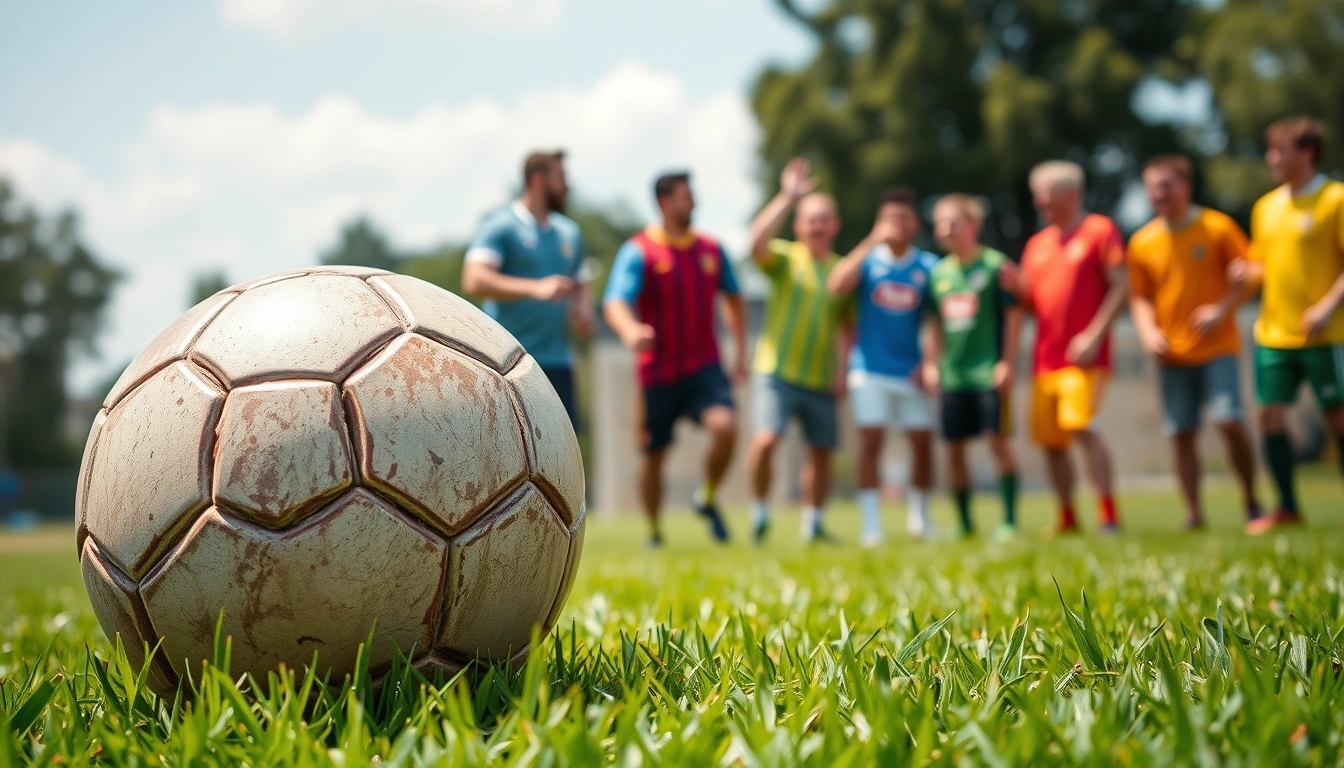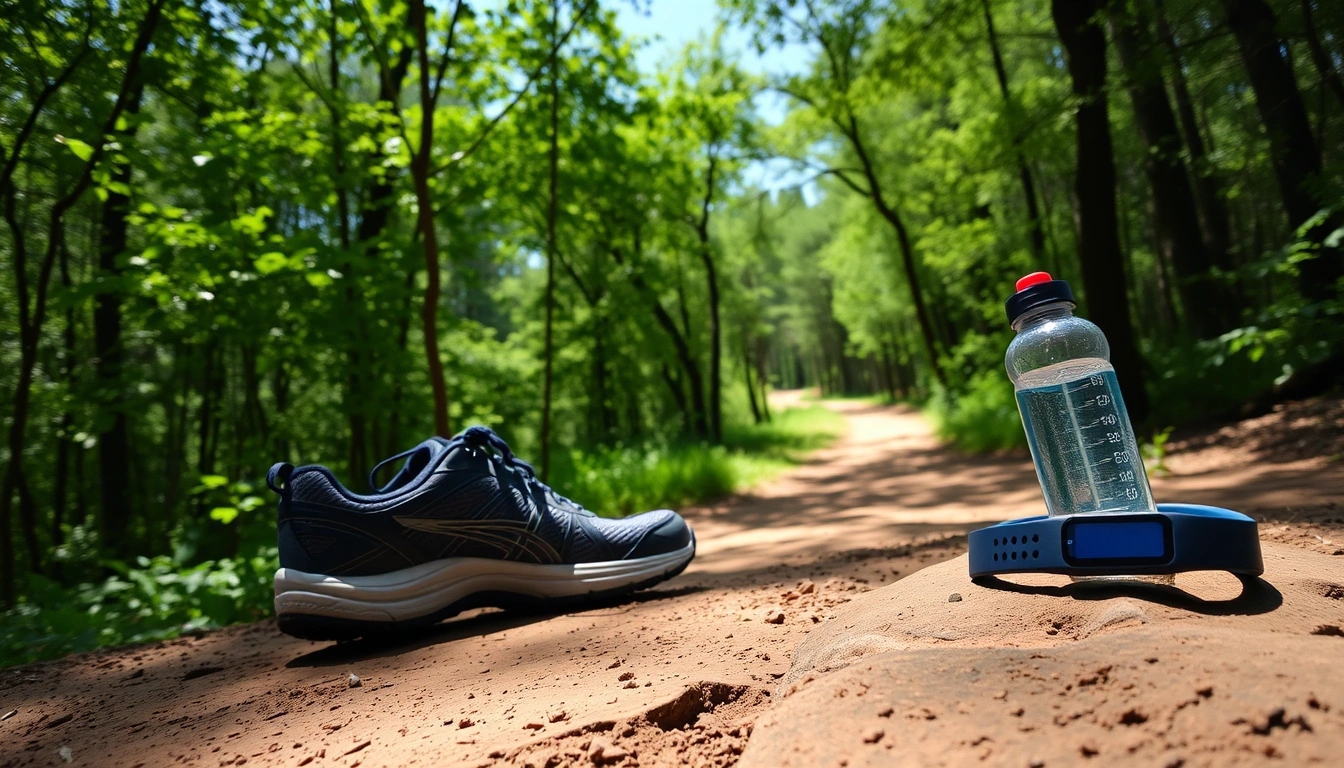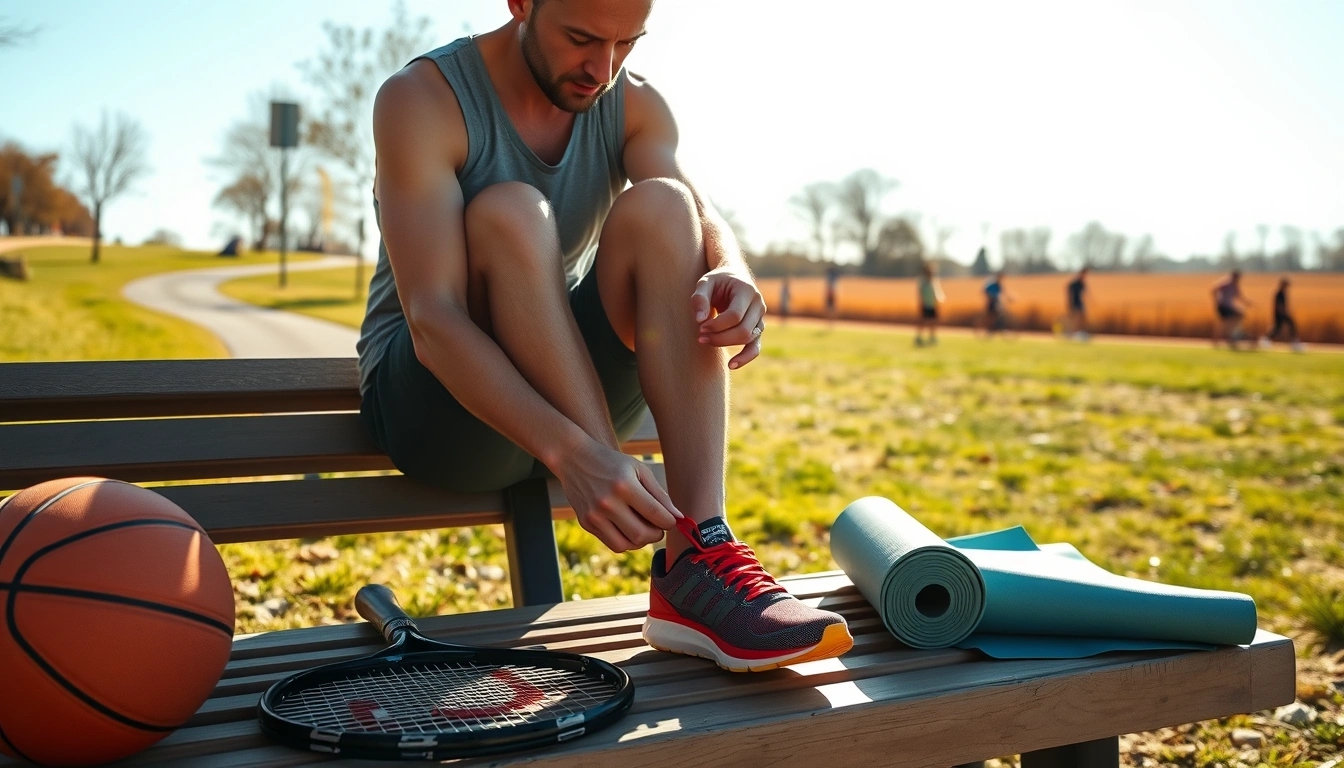Let’s be honest: not everyone’s cut out for the gym grind. The endless treadmill trudge, the clang of dumbbells, the mirrors that seem more judgmental than motivational — it’s enough to make anyone consider a career in couch potato-ism. But hey, staying active doesn’t have to mean suffering through a gym membership you barely use. There’s a whole world of sports out there that can keep you moving, laughing, and maybe even forgetting you’re exercising at all. Ready to ditch the dread and find your groove? Let’s dive in.
Why the gym isn’t for everyone
Look, gyms can feel like a necessary evil, but for many, they’re just plain boring. The repetitive routines, the intimidating machines, and sometimes the overly serious vibe can turn what should be fun into a dreaded chore. Plus, not everyone thrives in a solo environment staring at a screen or their reflection. Some folks crave social interaction, variety, or just a break from the humdrum. If you’re nodding along, you’re not alone. The good news? There are plenty of alternative ways to get your heart pumping.
| Common Gym Complaints | Alternative Sports Benefits |
|---|---|
| Monotonous workouts | Dynamic, ever-changing activities |
| Feeling self-conscious | Team sports offer camaraderie and support |
| Intimidating equipment | Bodyweight and natural movements |
| Solo boredom | Social engagement and fun competition |
Dance your way to fitness
If you think dance is just for the pros or the perpetually coordinated, think again. Styles like Zumba, hip-hop, or salsa are fantastic ways to torch calories without feeling like you’re “working out.” Plus, the music’s so infectious, you’ll forget you’re even exercising. It’s social, it’s energetic, and it’s downright fun. Bonus: you get to show off your moves at parties, which is a win-win.
- Zumba: Latin beats + aerobic moves calorie burn disguised as a dance party.
- Hip-hop: High energy and rhythm, perfect for those who want to express themselves.
- Salsa: Partner up and get your coordination and cardio on point.
Team sports: fun and motivation combined
Nothing beats the buzz of a good game. Soccer, basketball, volleyball — these aren’t just sports; they’re social events wrapped in sweat and cheers. The team aspect adds motivation — you’re accountable, you have goals, and you get to celebrate wins (and laugh off losses) with friends. Plus, the competitive edge keeps you pushing harder without even realizing it.
Benefits of Team Sports:- Builds friendships and social network- Enhances communication and teamwork skills- Provides structured, goal-oriented exercise- Keeps motivation high with friendly competition
So, if the gym’s got you snoozing, maybe it’s time to lace up those cleats or grab a ball. Your body (and sanity) might just thank you.
Why the gym isn’t for everyone
Let’s be honest — the gym can sometimes feel less like a place to get fit and more like a soul-sucking dungeon of dread. You’re not alone if the mere thought of stepping onto a treadmill or hoisting dumbbells makes you want to run for the hills. But why exactly do so many people find gym workouts a total drag? Well, buckle up, because it’s not just you being picky.
First off, the atmosphere in many gyms is, frankly, intimidating. You walk in and suddenly feel like everyone’s starring at you, silently judging your form or how much you can lift. The mirror-lined walls don’t help either — they amplify every awkward movement and sweaty mishap. It’s like a never-ending audition for “Fitness Model of the Year,” except you didn’t sign up for the role.
- Overcrowding — Nothing kills motivation faster than waiting in line for a machine or dodging sweaty strangers trying to squeeze into the same space.
- Repetitiveness — Doing the same exercises day in and day out can turn workouts into a monotonous grind. The gym sometimes feels like a hamster wheel that never stops spinning.
- Lack of social connection — Unlike team sports or dance classes, gyms often lack a sense of community. It’s you, the equipment, and your playlist — no cheering crowds or teammates to hype you up.
| Common Gym Grievances | Why It Matters |
|---|---|
| Intimidating environment | Decreases confidence, increases anxiety |
| Monotonous routines | Leads to boredom and burnout |
| Overcrowding | Reduces workout efficiency and enjoyment |
| Lack of motivation | Results in inconsistent attendance |
And then there’s the dreaded “gym culture” — you know, the unspoken pressure to look a certain way or push yourself to extremes. Not everyone thrives in that kind of environment. Some folks just want to move their bodies without feeling like they’re in a competition for the biggest biceps or the fastest mile. The gym can feel like a chore, a boring obligation rather than a fun, energizing activity.
Here’s a little practical insight: if you’re dragging your feet to the gym, ask yourself what you actually enjoy. Is it the movement? The social aspect? The challenge? Because if the gym isn’t hitting those notes, it’s totally okay to look elsewhere. Fitness doesn’t have to be about grunting in a crowded room full of machines. It can be dancing, hiking, swimming — whatever floats your boat.
Tips to avoid gym burnout:- Mix up your workouts to keep things fresh- Find a workout buddy for accountability & fun- Try classes that focus on social interaction- Set realistic, personal goals (not Instagram goals)- Don’t be afraid to ditch the gym for outdoor activities
So yeah, the gym isn’t for everyone — and that’s perfectly fine. The key is finding movement that sparks joy instead of dread. Because at the end of the day, fitness should be something you look forward to, not something you endure.
Dance your way to fitness
Forget the usual gym grind — if treadmills and weight racks make you yawn faster than a Monday morning, dance classes might just be your golden ticket to getting fit without the soul-sucking vibe of a typical workout. Seriously, who wants to grunt through reps when you can shake it off to some killer beats? Whether it’s Zumba, hip-hop, or salsa, these dance styles offer a fresh, energetic way to burn calories while having an absolute blast. And hey, let’s be honest, moving to music feels way less like exercise and more like a party.
- Zumba: This Latin-inspired dance workout is like a fiesta in a fitness class. You’re constantly moving, twisting, and stepping to high-energy rhythms that torch calories without you even realizing it. Plus, the routines are simple enough to pick up quickly, so no “left foot, right foot” confusion here.
- Hip-hop: For those who crave urban beats and sharp moves, hip-hop classes get you grooving with style and attitude. It’s not just about looking cool; the quick footwork and body isolations seriously boost coordination and endurance.
- Salsa: Salsa brings the heat with its sensual, fast-paced steps. Partner up or go solo — either way, you’re engaging your core, legs, and arms in a rhythmic workout that feels more like dancing at a club than sweating it out in a gym.
| Dance Style | Calories Burned (per hour) | Key Benefits |
|---|---|---|
| Zumba | 400-600 | Cardio endurance, coordination, mood booster |
| Hip-hop | 350-500 | Strength, agility, rhythm |
| Salsa | 300-450 | Balance, core strength, social interaction |
Now, the magic of dance classes isn’t just the physical perks. It’s the social buzz that keeps you coming back. You’re not stuck in a sweaty corner with grunting strangers — you’re part of a community, laughing off the awkward steps, high-fiving after nailing a tricky move, and maybe even making a few friends who share your love for shaking it loose. This social element makes sticking to your fitness routine way easier. Let’s face it, accountability is key, and when your workout feels like a social event, skipping it feels like missing out on the fun.
If you’re worried about coordination (no shame, we’ve all got two left feet at first), dance classes are designed to be inclusive. Instructors break down moves step-by-step, and you get to learn at your own pace. Plus, the music is so infectious you’ll find yourself moving even when you’re off the dance floor.
Tips to get started:- Pick a style that excites you; if salsa feels too fast, try Zumba’s steady beats.- Dress comfortably — breathable clothes and supportive shoes are a must.- Don’t stress about perfection; it’s all about having fun and moving.- Bring a friend for extra motivation or go solo and meet new people.
In short, if the gym feels like a drag, dance classes offer a lively, upbeat alternative that gets your heart pumping and your spirits soaring. So, why not trade the treadmill for some tunes and let your body find its rhythm? You might just discover that fitness doesn’t have to be a chore — it can be a dance party.

Team sports: fun and motivation combined
Jumping into team sports like soccer, basketball, or volleyball is more than just lacing up your sneakers and hoping for the best. It’s about connecting with others, pushing your limits, and yes, sometimes getting a little sweaty while having a blast. If the idea of solitary treadmill runs or endless reps at the gym makes you want to hide under your bed, team sports might just be your golden ticket to staying fit without feeling like you’re stuck in a never-ending chore.
You see, the beauty of team sports lies in the social aspect. When you’re on a soccer field or basketball court, you’re not just working out; you’re building friendships, learning teamwork, and sharing laughs (and maybe a few groans when you miss that easy shot). That camaraderie is a powerful motivator — it’s a lot harder to bail on practice when you know your teammates are counting on you. Plus, competition adds this thrilling edge that makes you want to improve, even if you’re just playing for fun.
| Benefits of Team Sports | Why it Matters |
|---|---|
| Regular Physical Activity | Keeps your heart healthy and muscles strong without feeling like a workout. |
| Social Interaction | Builds friendships and improves communication skills. |
| Improved Mental Health | Reduces stress and boosts mood through endorphin release and social support. |
| Accountability | Teammates encourage you to show up and give your best. |
Now, don’t get me wrong — team sports aren’t all sunshine and rainbows. There’s the occasional bruised ego when you fumble a pass, or the frustration of not being the star player (we’ve all been there). But honestly, those little setbacks are part of the charm. They teach resilience and humility, which are pretty handy skills off the field too.
- Soccer: A fast-paced game that’s great for cardio and coordination. Plus, you get to chase a ball around with a bunch of folks who probably scream way too much.
- Basketball: Perfect for quick bursts of speed and agility. Also, the feeling of sinking a three-pointer? Priceless.
- Volleyball: Focuses on teamwork and reflexes, with plenty of chances for high-fives and epic dives.
If you’re worried about skill level, don’t sweat it. Most leagues have divisions for beginners to pros, so you can find your tribe without feeling like a total fish out of water. And hey, sometimes the best memories come from those hilarious newbie moments.
Practical Tips for Getting Started:- Find a local league or community center offering beginner-friendly teams.- Show up consistently — commitment is key, but don’t stress perfection.- Focus on having fun rather than winning every game.- Use the social aspect to build motivation; bring a friend along!
In the end, team sports offer a win-win: you get to stay fit, make friends, and enjoy a little friendly competition all at once. So, if the gym feels like a prison sentence, maybe it’s time to trade those dumbbells for a basketball or a volleyball. Your body — and your social life — will thank you.
Swimming: a low-impact full-body workout
If you’re tired of the usual gym grind — you know, the endless clanking of weights, the monotonous treadmill trudge, and the awkward machine contortions — then swimming might just be your new best friend. It’s not just a splashy pastime; it’s a powerhouse workout that’s gentle on your joints but fierce on calories. Seriously, it’s like the best of both worlds rolled into one wet, wild package.
Why is swimming so special? Well, for starters, water supports your body weight, which means less strain on your knees, hips, and ankles. If your joints have been screaming at you after a run or a heavy leg day, swimming offers a welcome reprieve. Plus, it’s a full-body workout — every stroke engages muscles you didn’t even know existed. Arms, shoulders, core, legs — all get their fair share of action. And don’t get me started on the cardio benefits; your heart and lungs get a solid workout without feeling like you’re gasping for air.
- Low impact: Perfect for folks with arthritis, injuries, or just those who hate the “thump-thump” pounding of running.
- Full-body engagement: Every stroke activates multiple muscle groups, making it efficient and effective.
- Calorie burner: Depending on intensity, swimming can torch anywhere from 400 to 700 calories per hour.
- Cooling effect: Unlike sweaty gym sessions, the water keeps you cool, making workouts feel less brutal.
Now, don’t get me wrong — swimming isn’t all sunshine and rainbows. It requires technique, and if you’re a newbie, flailing around like a fish out of water is almost guaranteed. But hey, that’s part of the charm, right? Plus, you can mix it up with different strokes — freestyle, breaststroke, backstroke, butterfly — each with its own rhythm and challenge. Variety keeps boredom at bay, unlike the soul-crushing monotony of elliptical machines.
| Stroke | Main Muscles Worked | Difficulty Level | Calories Burned (per hour) |
|---|---|---|---|
| Freestyle | Arms, shoulders, core, legs | Moderate | 500-700 |
| Breaststroke | Chest, arms, legs | Easy to Moderate | 400-600 |
| Backstroke | Back, shoulders, legs | Moderate | 400-600 |
| Butterfly | Chest, shoulders, core, legs | High | 600-800 |
Another cool thing? Swimming is a mental reset. The rhythmic nature of the strokes, the soothing sound of water, and that weightless feeling can be downright meditative. It’s a break from the noise of everyday life and the stress of the gym’s “look at me” culture. Plus, it’s a social activity too — swim clubs, water aerobics, or just chilling with friends poolside — so you get fitness and fun rolled into one.
Practical tips for diving in:
- Start slow. Don’t expect to swim like Michael Phelps on day one.
- Consider lessons to nail your technique and avoid injury.
- Mix strokes to keep workouts fresh and target different muscles.
- Use swimming as active recovery on rest days.
- Invest in a good pair of goggles and a swim cap — trust me, it’s worth it.
So, if the gym feels like a drag and pounding pavement or lifting weights isn’t your cup of tea, give swimming a shot. It’s a workout that’s tough but kind, challenging but refreshing. And hey, you might just find yourself looking forward to your next dip in the pool instead of dreading the gym.
Martial arts: discipline meets fitness
So, you’re not exactly thrilled by the idea of sweating it out on a treadmill or lifting weights in some echoey gym? Well, martial arts might just be the ticket you didn’t know you were looking for. Forget the dull, repetitive gym grind and step into a world where strength, agility, and confidence are built with a punch, kick, or throw — all outside the four walls of a gym.
Martial arts like karate, judo, and kickboxing aren’t just about fighting or self-defense. They’re a full-on workout disguised as an ancient practice. These disciplines demand you to move your body in ways that build explosive power, lightning-fast reflexes, and mental focus — all while keeping boredom miles away. Plus, the bonus? You get to feel like a total badass doing it.
- Karate focuses on precise strikes and blocks, which develop muscle control and balance.
- Judo teaches you to use your opponent’s force against them, emphasizing throws and groundwork — perfect for building core strength and coordination.
- Kickboxing blends punches and kicks in high-intensity cardio sessions that torch calories and boost endurance.
Now, don’t get me wrong, martial arts can be tough. You’ll be sweating buckets, gasping for air, and maybe even questioning your life choices during that first class. But here’s the kicker: it’s also incredibly rewarding. The discipline you learn spills over into your daily life, boosting your confidence and helping you handle stress like a champ.
| Martial Art | Main Benefits | Ideal For |
|---|---|---|
| Karate | Improves balance, muscle control, and mental focus | Those who want structured training and self-discipline |
| Judo | Builds core strength, coordination, and tactical thinking | People interested in grappling and close-contact skills |
| Kickboxing | Boosts cardiovascular fitness, endurance, and agility | Anyone craving high-energy workouts and calorie burn |
One of the coolest things about martial arts is the community vibe. Unlike the often lonely gym grind, martial arts classes are social, supportive, and sometimes downright hilarious — when you’re not getting kicked, that is. Training partners push you to improve, and the camaraderie helps keep motivation high when your muscles scream “no more!”
Here’s a quick heads-up: if you’re a total newbie, don’t expect to become a black belt overnight (no magic here). It takes time, patience, and a willingness to look a bit clumsy at first. But trust me, every jab, block, and kick you land will feel like a small victory.
Tips for beginners:- Start slow, focus on technique over speed.- Wear comfortable clothes and bring water.- Don’t be afraid to ask questions or take breaks.- Consistency beats intensity — show up regularly.
So, if the gym feels like a prison sentence, why not give martial arts a shot? It’s a killer combo of fitness and discipline that keeps you sharp physically and mentally — all while having a blast. Who knows, you might even surprise yourself with how quickly you pick up those moves.
In the end, martial arts aren’t just workouts; they’re a lifestyle. And hey, if you ever find yourself in a pickle, at least you’ll have some moves to back you up — no gym membership required.

Outdoor running and trail jogging
There’s just something about lacing up your shoes and hitting the open road or winding trails that beats the monotonous hum of a treadmill. Seriously, who wants to stare at a blank wall or a flickering TV screen when you could be soaking in fresh air, feeling the sun on your face, and actually seeing the world move by? Outdoor running and trail jogging offer a refreshing escape from the gym’s four walls, mixing exercise with a bit of adventure and nature therapy. Plus, it’s a great way to shake off the mental cobwebs that indoor workouts sometimes bring on.
Now, don’t get me wrong — starting to run outside can feel a bit intimidating if you’re not a seasoned pro. The uneven terrain, unpredictable weather, and those pesky hills might make you question your life choices. But hey, every runner was once a beginner who probably huffed and puffed like a steam engine just to get through their first mile. The key is to start slow, listen to your body, and keep the pressure off yourself. Remember, it’s not about speed or distance initially, it’s about showing up and moving.
| Tip | Why It Helps |
|---|---|
| Start with walk-run intervals | Builds endurance gradually without burning out |
| Choose familiar, flat routes | Reduces risk of injury and boosts confidence |
| Invest in good running shoes | Provides support and comfort for different terrains |
| Run with a buddy or group | Keeps motivation high and makes it more fun |
| Set realistic goals | Prevents frustration and keeps progress steady |
Besides the physical perks like improved cardiovascular health, stronger muscles, and better endurance, outdoor running offers a mental boost that’s hard to beat. The variety of scenery keeps your brain engaged — no more zoning out on that endless treadmill loop! Plus, the natural surroundings can lower stress, improve mood, and even spark creativity. Ever notice how some of your best ideas pop up during a jog through the park? Yeah, science backs that up.
- Fresh air beats recycled gym air any day.
- Changing terrain works different muscles and improves balance.
- Sunlight helps regulate your sleep and mood through vitamin D.
But hey, don’t get cocky! Trail jogging can be a whole different beast compared to pavement pounding. You need to watch your footing, stay alert for roots, rocks, or sneaky critters, and be ready for sudden changes in elevation. It’s like nature’s obstacle course — challenging but rewarding. And if you’re worried about safety, just pick well-populated trails during daylight hours and maybe bring a phone or a running buddy along.
So, if you’re itching to ditch the treadmill treadmill treadmill (did I say treadmill enough?), give outdoor running or trail jogging a shot. It’s not just exercise; it’s a chance to reconnect with nature, clear your head, and maybe even meet some fellow runners along the way. Just remember to take it easy at first — nobody expects you to be the next marathon champ overnight. Lace up, step outside, and enjoy the run — the world’s waiting.
Cycling: pedal your way to better health
Cycling is one of those rare activities that manages to be a fun commute, a weekend adventure, and a serious workout all rolled into one. Seriously, if you think biking is just for kids or weekend tourists, think again. Whether you’re zipping through city streets to avoid traffic or hitting rugged trails to escape the chaos, cycling offers a refreshing alternative to the dull, repetitive grind of gym workouts. And let’s be honest, staring at a treadmill screen for an hour can get old real fast.
One of the best things about cycling is how versatile it is. You can take it slow and steady for a chill ride around the neighborhood, or crank it up for an intense calorie-burning session that leaves you sweaty and satisfied. Plus, it’s a fantastic way to explore new places—city parks, hidden bike paths, or countryside roads you’d never find by car. You get the bonus of fresh air and scenery that no gym can replicate.
| Type of Cycling | Benefits | Ideal For |
|---|---|---|
| Commuting | Eco-friendly, saves money, avoids traffic jams | Daily travelers, urban dwellers |
| Mountain Biking | Builds strength, improves balance, adrenaline rush | Adventure seekers, nature lovers |
| Road Cycling | Boosts cardiovascular health, endurance training | Fitness enthusiasts, competitive riders |
Now, I won’t pretend that cycling is all rainbows and sunshine. There’s the occasional flat tire, the struggle against headwinds, or the awkwardness of sharing narrow bike lanes with impatient drivers. But hey, isn’t that part of the charm? Overcoming little challenges only makes the ride sweeter.
- Pro tip: Invest in a good helmet and some bright clothing. Safety first, folks!
- Gear up: Padded shorts and gloves can save you from rookie discomforts.
- Route planning: Apps like Strava or Komoot help you find the best trails and avoid sketchy spots.
And if you’re worried about being stuck in the same old loop, cycling communities and clubs are a fantastic way to keep things fresh. Group rides bring in a social element that makes those long miles fly by, plus a little friendly competition never hurt anyone.
So, if gym boredom has you daydreaming about quitting, consider hopping on a bike instead. It’s a win-win: you get fit, explore, and dodge the monotony of dumbbells and elliptical machines. Trust me, once you feel that wind on your face and the freedom of the open road, you might just wonder why you didn’t start cycling sooner.
Summary:- Cycling versatile and fun fitness option- Great for commuting, adventure, or serious training- Offers fresh air and new scenery- Requires some gear and safety awareness- Joining clubs adds motivation and social fun
In a nutshell, cycling isn’t just exercise; it’s a lifestyle that can spice up your routine and keep you coming back for more. So grab your helmet, hit the pedals, and let the good times roll!
Rock climbing: challenge your body and mind
If you’ve ever watched someone scale a rock wall or cling to a cliff face and thought, “No way, that’s not for me,” well, you might wanna reconsider. Rock climbing—whether indoors at a gym or out in the wild—offers a seriously thrilling way to build your strength while also giving your brain a good workout. It’s not just about brute force; it’s like a giant, physical puzzle that demands problem-solving skills, creativity, and a dash of patience. Sounds like a pretty sweet combo, right?
Let’s break it down. At the gym, climbing walls are designed with routes, or “problems,” that vary in difficulty. You don’t just grab any hold and hope for the best; you have to figure out the best sequence of moves to reach the top. This mental challenge keeps your brain sharp and engaged—no zoning out here! Plus, it’s a full-body workout. Your fingers, arms, shoulders, core, and legs all get in on the action. It’s like multitasking for your muscles.
| Benefits of Rock Climbing | Description |
|---|---|
| Strength Building | Targets multiple muscle groups, improving overall body strength. |
| Problem Solving | Requires route planning and quick thinking to navigate holds. |
| Improved Flexibility | Stretching to reach holds enhances joint mobility. |
| Cardio Boost | Elevates heart rate, especially on longer climbs. |
| Stress Relief | Focus on climbing helps distract from daily worries. |
Now, outdoor climbing takes things up a notch. You’re dealing with real rock, unpredictable weather, and the sheer beauty of nature. The stakes feel higher, and the adrenaline rush? Oh, it’s real. But don’t let that scare you off. Outdoor climbing demands respect and preparation but rewards you with an unmatched sense of accomplishment. Plus, it’s a great excuse to escape screens and soak up some vitamin D.
- Safety first: Always use proper gear and get training before hitting outdoor spots.
- Start small: Beginner-friendly routes exist—no need to jump on a 50-foot cliff on day one.
- Buddy system: Climbing with a partner is not just fun, it’s essential for safety.
Here’s the kicker: climbing can be pretty addictive. You might start thinking about your next route while still nursing sore fingers. And that’s not a bad thing. It’s a sport that keeps pushing you to improve, both physically and mentally.
Tips for Beginners:- Focus on technique, not just strength.- Warm up properly to avoid injuries.- Don’t be afraid to fall (with safety ropes, of course).- Take rest days to let your muscles recover.- Watch others and learn from their moves.
In a nutshell, rock climbing isn’t just a sport; it’s a full-on adventure that challenges your body and mind in ways a treadmill never will. So, if you’re tired of the same old gym grind and want something that’s fun, social, and downright rewarding, give climbing a shot. You might just find your new favorite obsession.

Yoga and Pilates: strength and serenity
Yoga and Pilates often get tossed into the same basket, but they each bring their own flavor to the fitness table. If you’re the type who cringes at the thought of a sweaty gym session packed with clanging weights and endless cardio machines, these two might just be your new best pals. Both focus on building core strength and improving flexibility, but they also sneak in something a little extra—mental calmness. Yep, it’s not just about the muscles; it’s about chilling your mind too.
Let’s be real—walking into a gym can feel like stepping into a chaotic zoo sometimes. Yoga and Pilates offer a refreshing escape from all that noise. You don’t need fancy equipment or a membership card; just a mat and some space. Plus, you can do them practically anywhere—your living room, a park, or even your office during a sneaky break. The beauty lies in their simplicity and effectiveness.
| Aspect | Yoga | Pilates |
|---|---|---|
| Focus | Mind-body connection, breathing, flexibility | Core strength, posture, controlled movements |
| Typical Session | Flowing poses, meditation, breathing exercises | Repetitive controlled moves, equipment optional |
| Benefits | Stress relief, improved balance, muscle tone | Enhanced core, better posture, injury prevention |
Now, if you’re thinking, “Sure, sounds nice, but is it really a workout?”—oh, absolutely! Don’t let the calm vibes fool you. Both disciplines demand focus and discipline. Pilates, for instance, is notorious for targeting those deep abdominal muscles that most gym routines overlook. It’s like giving your core a VIP treatment. Yoga, on the other hand, stretches and strengthens simultaneously, which means you’re less likely to feel like the Tin Man the next day.
- Flexibility: Both practices stretch your muscles gently but effectively, improving your range of motion.
- Core Strength: Pilates especially hones in on your abs, back, and pelvis to build a rock-solid center.
- Mental Calmness: Yoga’s meditative elements help reduce stress and increase mindfulness.
And here’s a little secret—these workouts don’t just tone your body; they tune your mind. After a session, many people report feeling more centered, less frazzled, and surprisingly energized. It’s like hitting the reset button on your day. So, if you’re fed up with the gym grind, why not give yoga or Pilates a whirl? Your body and brain might just thank you.
Still unsure where to start? Consider this quick practical guide:
1. Try a beginner-friendly class online or at a local studio.2. Pick a quiet spot with minimal distractions.3. Invest in a good mat—comfort matters!4. Don’t rush; focus on breathing and form.5. Mix and match to keep things fresh.
At the end of the day, it’s not about sweating buckets or lifting the heaviest weights. It’s about finding a workout that feels good, challenges you, and keeps you coming back. Yoga and Pilates might just be the perfect combo of strength and serenity you didn’t know you needed.
Skateboarding and rollerblading: fitness on wheels
Okay, so you’re tired of the usual gym grind—treadmills that feel like hamster wheels and dumbbells that seem to mock your effort. Enter the world of skateboarding and rollerblading, where fitness meets street style and a whole lot of fun. These wheeled sports aren’t just about looking cool (although, let’s be honest, the swagger is a big part of it). They’re seriously effective at improving your balance, coordination, and endurance, all while you’re having a blast. No boring reps here, just rolling, gliding, and sometimes face-planting (hey, nobody’s perfect).
- Balance: Keeping steady on a skateboard or rollerblades demands constant micro-adjustments from your muscles. This means your core and leg muscles get a workout just by staying upright.
- Coordination: Timing your movements, steering, and reacting to obstacles all sharpen your hand-eye and foot-eye coordination. It’s like your brain and body are having a dance-off every time you hit the pavement.
- Endurance: Don’t underestimate the stamina needed to cruise around for hours or nail tricks. Your heart rate spikes, your lungs work overtime, and before you know it, you’ve got a cardio session disguised as fun.
Now, if you’re thinking, “But isn’t skating dangerous?” Well, yeah, there’s a bit of risk involved—like any sport. But with the right gear (helmet, pads, wrist guards) and a bit of practice, it’s mostly about controlled falls and learning to get back up. Plus, the street style vibe adds an edge that gyms just can’t replicate. You’re not just exercising; you’re part of a community, a culture that’s all about creativity and self-expression.
| Skateboarding | Rollerblading |
|---|---|
| Focuses more on tricks, jumps, and ramps | Often used for speed, long-distance, and smooth gliding |
| Requires a bit more technical skill to start | Generally easier to pick up for beginners |
| Great for building explosive power and agility | Excellent for endurance and steady cardio |
If you’re curious about how to get started, here’s a quick checklist:
- Get the basics: skateboard or rollerblades, helmet, and protective gear.
- Find a safe spot—skate parks or smooth sidewalks work wonders.
- Start slow, focus on balance and simple movements.
- Watch tutorials or join a local group for tips and motivation.
Honestly, skating isn’t just a workout; it’s a lifestyle. It’s about freedom, adrenaline, and sometimes just chilling with friends on wheels. So if you’re fed up with the gym’s monotony, why not roll into something that’s equal parts fitness and fun? Your body—and your boredom—will thank you.
Gardening and active hobbies
Gardening and Active Hobbies:
You might think gardening is just for retirees with too much time on their hands or those who want to brag about their prize-winning petunias. But hold on! Gardening and other active hobbies are sneaky ways to keep your body moving, your mind sharp, and your mood boosted — all while you’re outside soaking up some much-needed vitamin D. It’s not just about planting seeds and hoping for the best; it’s a surprisingly effective workout disguised as a peaceful pastime.
Let’s break it down — gardening involves a weird mix of squatting, stretching, digging, and hauling heavy bags of soil or mulch. It’s like a full-body workout, but without the sweaty gym mirrors judging you. And don’t underestimate the calorie burn! According to some studies, an hour of gardening can torch anywhere between 200 to 400 calories, depending on how hardcore you get. Plus, you’re constantly on your feet, bending and twisting, which improves flexibility and balance over time.
| Activity | Calories Burned (per hour) | Muscle Groups Worked |
|---|---|---|
| Digging | 300-400 | Arms, shoulders, back, legs |
| Weeding | 200-300 | Core, arms, legs |
| Raking | 250-350 | Back, shoulders, core |
| Planting | 180-250 | Legs, arms, core |
And it’s not just gardening! Other active hobbies like birdwatching (yes, you’re walking and scanning), hiking, or even backyard obstacle courses for your kids can keep you moving without feeling like a workout. These activities sneak in exercise while letting you enjoy nature — which, let’s be honest, feels way less like punishment than a treadmill.
- Gardening perks: Stress reduction, improved mood, and fresh air.
- Active hobbies: Variety keeps boredom at bay and muscles guessing.
- Social benefits: Community gardens and clubs can connect you with like-minded folks.
Here’s a little secret: the productivity factor in gardening is a game-changer. Unlike a gym session where you might question why you’re sweating buckets, gardening gives you visible results — those veggies, flowers, or herbs don’t just grow themselves. That sense of accomplishment? Priceless. Plus, you get to eat what you grow, so it’s a win-win for your health and your wallet.
Tips to maximize fitness benefits from gardening and active hobbies:- Switch tasks every 20 minutes to engage different muscle groups.- Use ergonomic tools to avoid strain.- Stay hydrated and take breaks in the shade.- Incorporate light stretching before and after.- Join local gardening groups for motivation and socializing.
So next time you’re tempted to skip exercise because the gym feels like a dungeon, grab your gloves and get outside. Gardening and active hobbies might just be the underrated fitness hacks you never knew you needed. Who knew getting dirty could be so good for you? Give it a shot — your body and mind will thank you.

Choosing the right sport for you
Picking a sport that actually fits you can feel like trying to find a needle in a haystack—especially if the thought of the gym makes you break out in a cold sweat. But here’s the kicker: you don’t have to torture yourself with treadmills or dumbbells to get moving. The secret sauce is matching your personality, fitness goals, and lifestyle to something that feels less like a chore and more like a good time.
First off, ask yourself what kind of vibe you’re after. Are you a social butterfly who thrives on team spirit? Or maybe you’re more of a lone wolf who likes to zone out and focus? For instance, if you love hanging out with people and a bit of friendly competition, team sports like basketball or soccer could be your jam. Nothing like a little trash talk to keep you motivated! On the flip side, if you prefer your own company, activities like swimming or trail running might be a better fit. Plus, those let you soak up some nature without the awkward small talk.
| Personality Type | Suggested Sports | Why It Works |
|---|---|---|
| Social & Competitive | Soccer, Basketball, Volleyball | Team environment fuels motivation and makes workouts fun |
| Solo & Reflective | Swimming, Running, Yoga | Allows focus and personal pace, great for mental clarity |
| Adventurous & Thrill-Seeker | Rock Climbing, Skateboarding, Martial Arts | Challenges both body and mind, keeps boredom at bay |
| Relaxed & Low-Impact | Gardening, Pilates, Cycling | Gentle on joints but still effective for fitness |
Next, consider your fitness goals. Are you aiming to build strength, improve endurance, or just stay active enough to avoid feeling like a couch potato? It’s easy to get overwhelmed here, but think simple. If strength is your thing, martial arts or rock climbing can whip you into shape without feeling like a gym grind. Want endurance? Running or cycling outdoors can do wonders, and you get fresh air, which is a bonus.
- Tip #1: Don’t pick a sport just because it’s trendy or you think you “should.” You’ll hate it, and it’ll show.
- Tip #2: Try a few things out. Most places offer trial classes or drop-in sessions. Test the waters before diving in.
- Tip #3: Factor in your schedule. If you’re swamped during the week, maybe a weekend hiking group or evening yoga class fits better.
Also, let’s be real—some days you just want to chill. So, picking a sport that fits your lifestyle means it shouldn’t feel like an extra job. For example, if you hate waking up early, don’t sign up for 6 AM spin classes. If you’re not a morning person, maybe evening dance classes or rollerblading after work will keep your motivation intact.
Practical checklist to find your sport:- What do I enjoy doing in my free time?- Do I prefer solo or group activities?- What are my fitness goals? (Strength, endurance, flexibility, fun)- How much time can I realistically commit?- What’s nearby or easily accessible?
At the end of the day, the best sport is the one you’ll actually stick to without feeling like you’re dragging yourself to some dreaded gym dungeon. So, be honest with yourself, experiment, and keep it fun. Because if it ain’t fun, it ain’t sustainable.
Remember: Fitness isn’t one-size-fits-all, and your perfect sport might just be the one that makes you forget you’re even exercising.
Frequently Asked Questions (The title must be written in English.)
- Why do so many people dislike going to the gym?
Honestly, the gym can feel like a never-ending loop of monotony—same machines, same space, and often a lack of motivation. Many find it boring or intimidating, which kills the excitement to work out. It’s like being stuck in traffic when you just want to take a scenic drive!
- Can I really get fit without using gym equipment?
Absolutely! Fitness isn’t about fancy machines or heavy weights. Sports like swimming, dancing, or even rock climbing engage your whole body and keep things exciting. Think of it as choosing adventure over routine—your body and mind will thank you.
- What if I’m not very coordinated or athletic?
No worries! Many activities like yoga, Pilates, or casual cycling are beginner-friendly and focus on gradual progress. Plus, team sports offer a supportive environment where you learn and improve alongside others. Everyone starts somewhere, and the journey is part of the fun.
- How do I pick the right sport for me?
Ask yourself what excites you: socializing, being outdoors, or maybe a solo challenge? Your personality and lifestyle matter. If you love music and movement, dance might be your jam. If you crave nature, try trail running or gardening. The key is to find something that feels less like a chore and more like play.
- Is swimming really a good alternative to gym workouts?
Swimming is a powerhouse workout that’s gentle on your joints and hits every major muscle group. Plus, it’s refreshing and breaks the sweat monotony. Imagine exercising in a giant, cool bath—that’s swimming for you!
- How can team sports motivate me more than solo workouts?
Team sports bring the magic of camaraderie and friendly competition. When you’re part of a group, you’re more likely to show up and push yourself. It’s like having a built-in cheer squad that keeps boredom and excuses at bay.
- Are outdoor activities really better than indoor gym sessions?
Fresh air, sunlight, and nature’s beauty can boost your mood and energy in ways a gym can’t match. Outdoor running or cycling doubles as an adventure, making fitness feel less like work and more like exploration. It’s the difference between watching a movie and starring in one!
- Can active hobbies like gardening count as exercise?
Surprisingly, yes! Gardening involves bending, digging, and moving, which burns calories and builds strength. It’s a productive workout with the bonus of fresh veggies or flowers—talk about a win-win!













